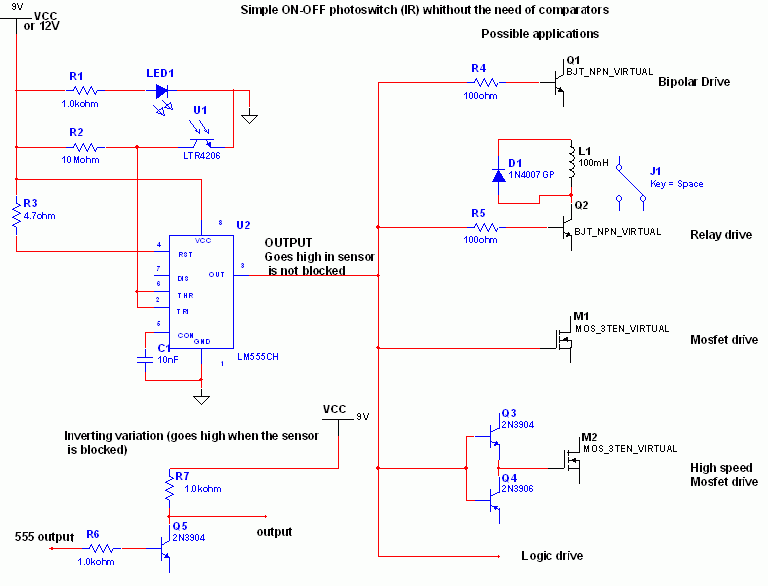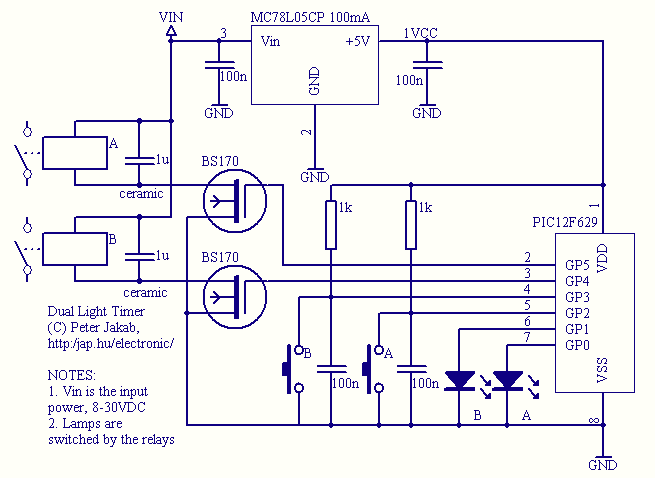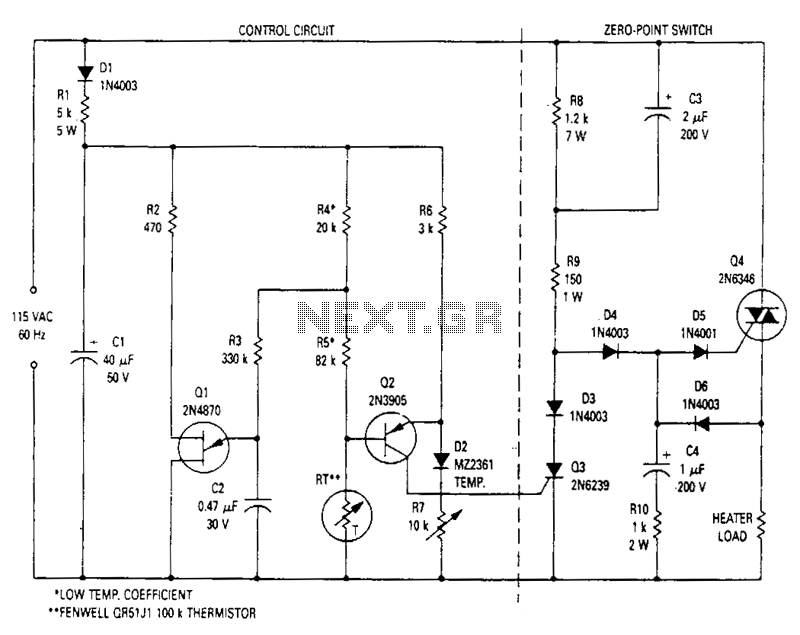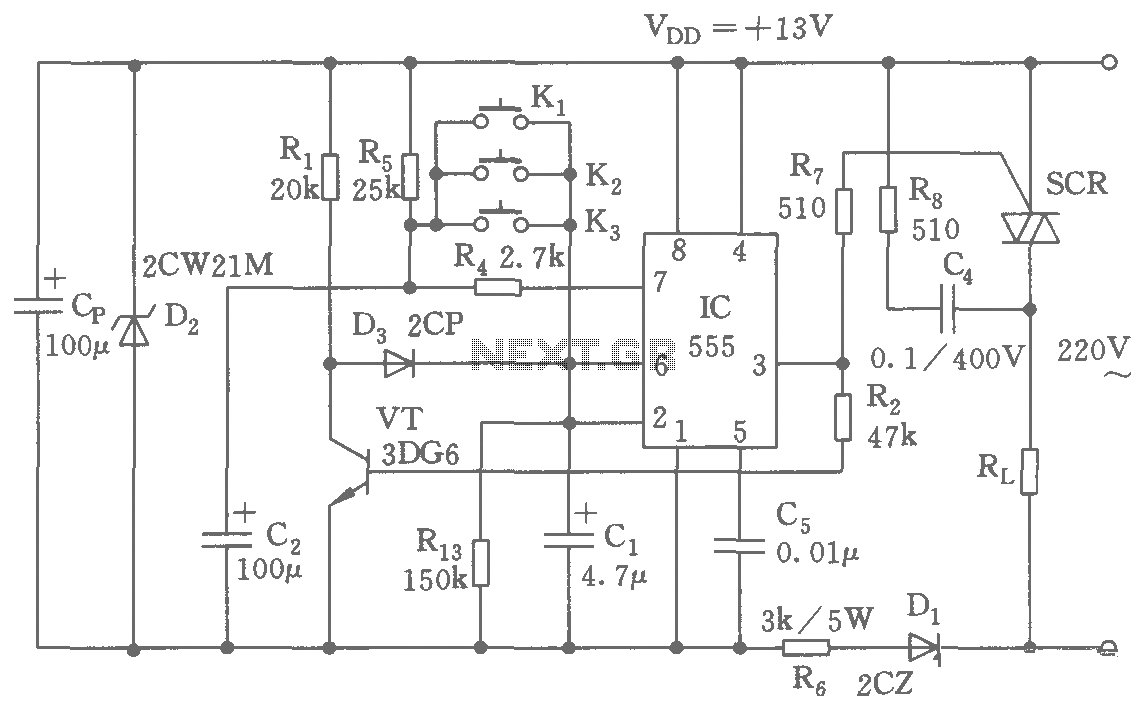
Flip-Flop Debouncer Switch
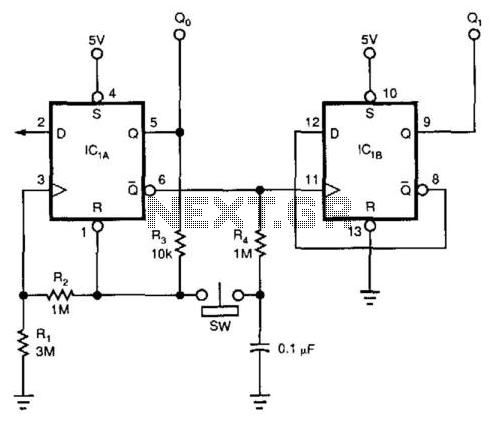
This circuit utilizes a 74HC74 flip-flop, although any CMOS variant of this component can be employed. IC1A functions as a true/complement buffer. Resistors R1 and R2 ensure that IC1A exits the reset state prior to the clock edge occurrence. Resistor R3 applies the logic state of IC1A to pins 1 and 3. When the switch is activated, the logic state stored in the capacitor is transferred to the reset and clock inputs of the flip-flop. Releasing the switch allows the capacitor to charge to the subsequent state through R4. The output of IC1A represents the least significant bit (LSB), while the output of IC1B represents the most significant bit (MSB). It is noteworthy that the counter's state increments upon the initial press of the switch, rather than on release, which is typical in many other switch-debouncing configurations. R1 can be substituted with a 22-pF capacitor to decrease the circuit's sensitivity to parasitic effects, and this addition permits a reduction in the values of R2 and R3 by a factor of ten.
This circuit design employs a dual D-type flip-flop, specifically the 74HC74, which is integral for creating a simple binary counter. The configuration is designed to provide reliable operation while minimizing the effects of switch bounce. The use of IC1A as a true/complement buffer allows for clear differentiation between the binary states.
Resistors R1 and R2 play critical roles in the reset timing of the flip-flop. They ensure that the output of IC1A is stable and ready for clock input by delaying the reset state just enough to synchronize with the clock edge. This timing is crucial in digital circuits where precise control over state changes is necessary.
The logic state of IC1A is routed to pins 1 and 3 through R3, which acts as a pull-up or pull-down resistor, depending on the design requirements. This arrangement guarantees that the correct logic level is applied to the flip-flop inputs, thus ensuring accurate counting.
When the switch is pressed, it triggers a transition that allows the stored charge in the capacitor to dictate the reset and clock inputs of the flip-flop. This mechanism effectively captures the intended state change without delay. Upon releasing the switch, the capacitor, in conjunction with resistor R4, charges to the next state, preparing the circuit for the subsequent logic operation.
The outputs of IC1A and IC1B provide the binary representation of the counter's state, with IC1A yielding the least significant bit and IC1B yielding the most significant bit. This design choice facilitates easy integration into larger digital systems where multi-bit binary values are necessary.
The unique characteristic of this circuit is its ability to increment the counter state on the initial press of the switch rather than on its release. This feature distinguishes it from traditional switch-debouncing techniques, which often rely on the release action to register a state change, thus enhancing responsiveness in applications where timing is critical.
The option to replace R1 with a 22-pF capacitor offers an additional layer of flexibility. By doing so, the circuit's sensitivity to parasitic capacitance is reduced, which can be particularly beneficial in high-frequency applications. Furthermore, this modification allows for a proportional reduction in the resistance values of R2 and R3, leading to a more compact and efficient design.
Overall, this circuit exemplifies a robust approach to implementing a binary counter using flip-flops, with considerations for noise immunity and timing precision. Although this circuit uses a 74HC74, any CMOS variant of this flip-flop will work. IC1A acts as a true/ compleme nt buffer. RI and R2 ensure that IC1A comes out of reset before the clock"s edge occurs. R3 applies IClA"s logic state to pins 1 and 3. When the switch closes, the next logic state stored on the capacitor transfers to the flip-flop"s reset and clock inputs. Releasing the switch lets the capacitor charge to the next state via R4. IClA"s output is the LSB; IClB"s output is the MSB. Notice that the counter"s state advances when the switch is first pressed, rather than when it"s released; the latter is the case with many other switch-debouncing schemes.
You can replace RI with a 22-pF capacitor to reduce the circuit"s sensitivity to parasitic effects. The addition of this capacitor also lets you lower the magnitude of R2 and R3 by a factor of 10.
This circuit design employs a dual D-type flip-flop, specifically the 74HC74, which is integral for creating a simple binary counter. The configuration is designed to provide reliable operation while minimizing the effects of switch bounce. The use of IC1A as a true/complement buffer allows for clear differentiation between the binary states.
Resistors R1 and R2 play critical roles in the reset timing of the flip-flop. They ensure that the output of IC1A is stable and ready for clock input by delaying the reset state just enough to synchronize with the clock edge. This timing is crucial in digital circuits where precise control over state changes is necessary.
The logic state of IC1A is routed to pins 1 and 3 through R3, which acts as a pull-up or pull-down resistor, depending on the design requirements. This arrangement guarantees that the correct logic level is applied to the flip-flop inputs, thus ensuring accurate counting.
When the switch is pressed, it triggers a transition that allows the stored charge in the capacitor to dictate the reset and clock inputs of the flip-flop. This mechanism effectively captures the intended state change without delay. Upon releasing the switch, the capacitor, in conjunction with resistor R4, charges to the next state, preparing the circuit for the subsequent logic operation.
The outputs of IC1A and IC1B provide the binary representation of the counter's state, with IC1A yielding the least significant bit and IC1B yielding the most significant bit. This design choice facilitates easy integration into larger digital systems where multi-bit binary values are necessary.
The unique characteristic of this circuit is its ability to increment the counter state on the initial press of the switch rather than on its release. This feature distinguishes it from traditional switch-debouncing techniques, which often rely on the release action to register a state change, thus enhancing responsiveness in applications where timing is critical.
The option to replace R1 with a 22-pF capacitor offers an additional layer of flexibility. By doing so, the circuit's sensitivity to parasitic capacitance is reduced, which can be particularly beneficial in high-frequency applications. Furthermore, this modification allows for a proportional reduction in the resistance values of R2 and R3, leading to a more compact and efficient design.
Overall, this circuit exemplifies a robust approach to implementing a binary counter using flip-flops, with considerations for noise immunity and timing precision. Although this circuit uses a 74HC74, any CMOS variant of this flip-flop will work. IC1A acts as a true/ compleme nt buffer. RI and R2 ensure that IC1A comes out of reset before the clock"s edge occurs. R3 applies IClA"s logic state to pins 1 and 3. When the switch closes, the next logic state stored on the capacitor transfers to the flip-flop"s reset and clock inputs. Releasing the switch lets the capacitor charge to the next state via R4. IClA"s output is the LSB; IClB"s output is the MSB. Notice that the counter"s state advances when the switch is first pressed, rather than when it"s released; the latter is the case with many other switch-debouncing schemes.
You can replace RI with a 22-pF capacitor to reduce the circuit"s sensitivity to parasitic effects. The addition of this capacitor also lets you lower the magnitude of R2 and R3 by a factor of 10.
